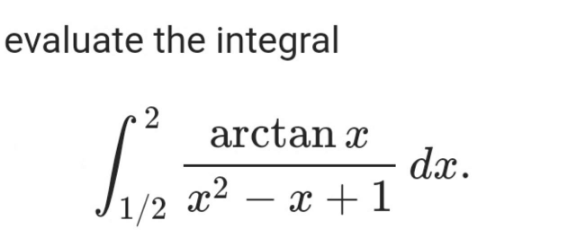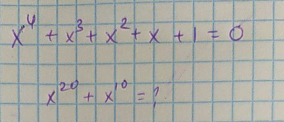
AllQuestion and Answers: Page 1010
Question Number 119006 Answers: 2 Comments: 0

Question Number 119097 Answers: 2 Comments: 0
Question Number 119096 Answers: 0 Comments: 0

Question Number 119002 Answers: 1 Comments: 0
Question Number 119000 Answers: 1 Comments: 1
Question Number 118997 Answers: 3 Comments: 0

Question Number 118990 Answers: 2 Comments: 0

Question Number 118984 Answers: 1 Comments: 0
Question Number 118975 Answers: 2 Comments: 0
Question Number 118969 Answers: 3 Comments: 0
Question Number 118967 Answers: 0 Comments: 0
Question Number 118962 Answers: 2 Comments: 0
Question Number 118960 Answers: 1 Comments: 0
Question Number 118959 Answers: 2 Comments: 0
$$\:\int\:\frac{{dx}}{{x}^{\mathrm{6}} −{x}^{\mathrm{3}} }\:? \\ $$
Question Number 118955 Answers: 1 Comments: 0
$${find}\:\int_{\mathrm{0}} ^{\infty} \:\:\frac{{lnx}}{{x}^{\mathrm{2}} +{x}+\mathrm{1}}{dx} \\ $$
Question Number 118954 Answers: 2 Comments: 0
Question Number 118952 Answers: 2 Comments: 0
Question Number 118950 Answers: 1 Comments: 0
Question Number 118949 Answers: 0 Comments: 0
Question Number 118944 Answers: 1 Comments: 0

Question Number 118934 Answers: 0 Comments: 0
Question Number 118937 Answers: 1 Comments: 0
Question Number 118935 Answers: 0 Comments: 0

Question Number 118930 Answers: 1 Comments: 0
Question Number 118928 Answers: 1 Comments: 2

Question Number 118927 Answers: 0 Comments: 0

Pg 1005 Pg 1006 Pg 1007 Pg 1008 Pg 1009 Pg 1010 Pg 1011 Pg 1012 Pg 1013 Pg 1014
